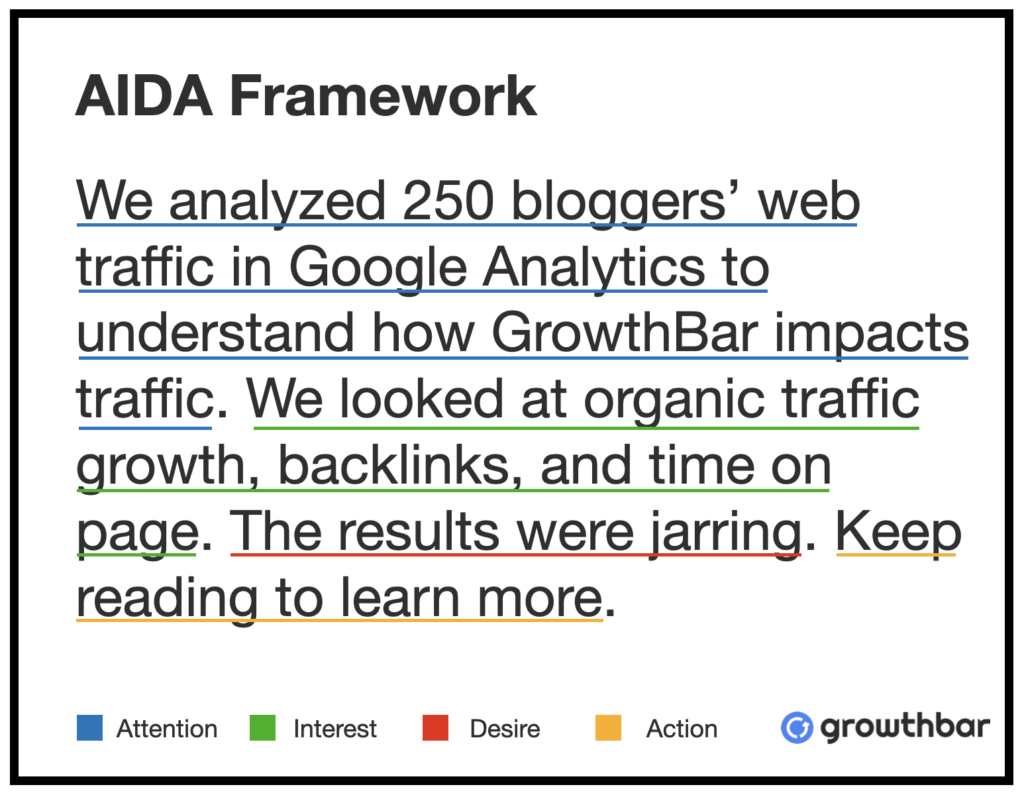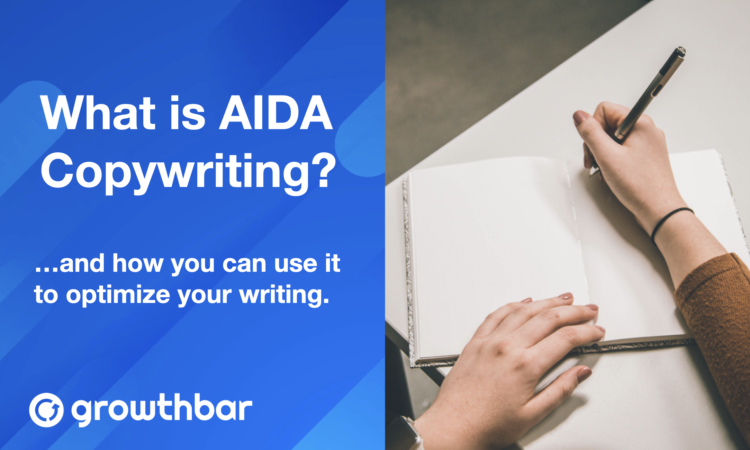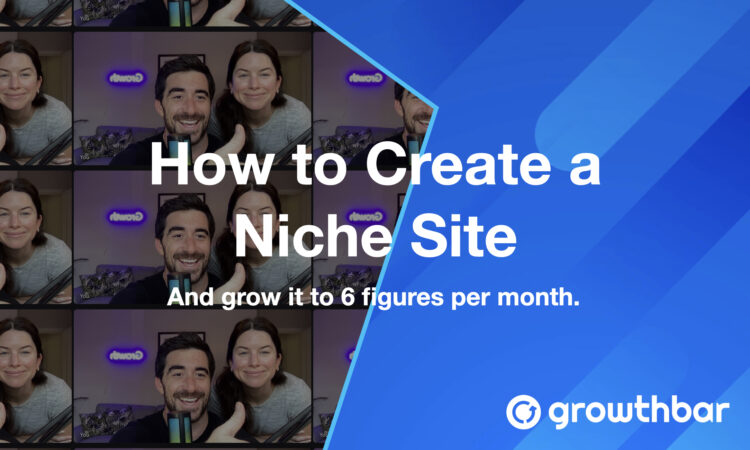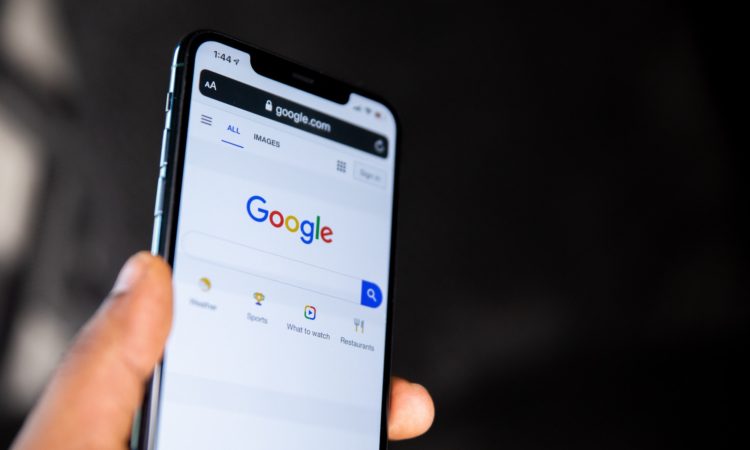- The 13 Best Semrush Alternatives and Competitors [2025] - March 14, 2023
- The 16+ Best AI Content Generators for Every Business Need [2025] - March 14, 2023
- How to Write a Content Brief [2025] - February 14, 2023
Ended soon
Copywriting is an essential skill for writing marketing messaging.
Regardless of the medium — digital or physical — copywriting is how brands inform, engage, and convert audience members into loyal consumers. Think about it: copywriting is essential for email marketing, SEO writing, social media marketing, and so much more.
And AIDA copywriting is the formula many writers follow when beginning a copywriting process. It stands for Attention, Interest, Desire, Action.
Table of Contents
What is AIDA Copywriting?
The AIDA model is a framework that can be used to increase the effectiveness of persuasive writing.
The model suggests that a writer should:
- First, get the readers’ attention with persuasive writing
- Then, attract the reader’s interest in the related product or service
- Then, make the reader desire the product or service,
- And finally, call on the reader to take action.

By following this model, writers can more effectively persuade their readers to take the desired action.
Why is AIDA Important in Marketing?
Without a formula like AIDA, persuasive copywriting would lack direction.
AIDA helps marketers build a relationship between brands and their customers by doing more than just selling a product, but offering valuable solutions to problems the brand understands its customers have.
Also Read: How to Make a Content Calendar or The Beginner’s Guide to SEO
The AIDA Copywriting Formula
This is the exact formula.
Attention
- This is where marketers begin to understand the audience they want to promote to in order to create the best content marketing. In order to gain attention, marketers must start by learning about the interests, lifestyles habits, and possible struggles of their audience in order to communicate marketing messages effectively. If you’re familiar with product marketing, you know what this is all about. Creating buyer personas can be helpful in giving life to the research about different audiences.
Interest
- Once you have grabbed the attention of a larger share of your current audience or a new audience altogether, the next step is retaining their attention. This is achieved by piquing your audience’s interest in the brand once they have already shown that the copy has their attention. Turning attention into interest is creating a need within your audience for your brand because it addresses a current problem in their life and creates a solution. This can be portrayed comedically, light-heartedly, or through testimonials and storytelling to be more memorable in the minds of audience members.
Desire
- Once a brand has gained the attention and kept the interest of the audience, all that’s left to do is create a need for the product by showing the audience the solution to the problem. The desire stage is where copywriting needs to be tantalizing. Writers should appeal to the audience’s emotions while demonstrating how the product or service advertised is not just a solution, but the best solution for audience members.
Action
- Now is the time for turning desire into conversions. Call your audience to act on the problem previously created within the marketing messages and choose the brand’s solution to said problem. The best way to get the audience to act is to make the process easy and worth it to them. Calls-to-action with direct links to a brand’s website or product page and creating urgency with special offers are both effective ways to make taking action for audience members smooth and rewarding.
AIDA Copywriting Examples
Below are a few examples of the AIDA framework. It’s incredible to see that AIDA isn’t just for written copy, but visual as well. Great advertisements can capture the AIDA framework with just a few words… or even an image.
Coca-Cola
Here, Coca-Cola is winning the attention of its target audience with 3-D visual elements coming off the billboard and vibrant colors. To keep the attention of its target audience and turn attention into interest, Coca-Cola places the large, turned-over Coca-Cola bottle in the center alerting the audience what they were giving their attention to and holding interest. Once the attention is grabbed and interest is piqued in the product, Coca-Cola creates desire through details within the image such as the carbonation bubbling, the condensation on the outside of the bottle, and the liquid seemingly about to pour into the street below. Now is where Coca-Cola urges the target audience to take action by choosing to “Open Happiness” and drink Coca-Cola.
McDonald’s
Here, McDonald’s is attracting the attention of audience members through unique visual elements and formatting of the headlines. Once they have your attention, McDonald’s converts attention to interest by comparing their Big Mac meal to putting gas in a car’s tank with the first headline, “Fuel up…” With attention grabbed and interest piqued, McDonald’s creates a desire for audience members by assuring audience members when they “Fuel up…” with McDonald’s they’ll also “…feel good!” after eating. Now with the attention of the audience gained, interest in the product is there, and desire has been created, McDonald’s calls audience members to take action by calling the large, bolded phone number to inquire more.
Apple
Here, Apple puts the product in the center of the image but is purposefully shielding the user’s face — which is paradoxically attention-grabbing. The copy starts with the headline “privacy,” which creates interest. Although the action here is less direct, Apple alerts audience members if this is what they desire from their smart device, “That’s iPhone,” alluding them to choosing Apple for their next tech purchase. Pretty clever, right?
Target
Here, Target grabs the attention of readers with a large, bolded headline “Same Day Delivery.” Now that the audience members’ attention is on the ad, Target goes into the second line of copy “Easy as PB&J,” to signal that same-day delivery is as simple as could be. To create desire, Target pulls audience members to below the image to learn that same-day delivery will alleviate some of the stress they may be experiencing by having to go to the store. Target then creates urgency for target audience members to act by calling them to visit Target’s website to learn more.
Tips for Successful AIDA Copywriting
1. Know Your Target Customer
The AIDA copywriting formula can drastically change how audience members view a brand’s content marketing and encourage them to buy. But without understanding the motivations behind wanting to purchase your brand’s product this is a winless battle. Every audience has different wants and needs impacting their purchasing decision, the key is to find what those are and speak to your audience accordingly in order to create more conversions. This is where buyer personas can come in handy with helping to understand how best to speak to a specific audience. The research about an audience previously collected is now a true, potential member of the target audience.
2. Focus on Headlines
Headlines are what first garner an audience member’s attention enough to show interest in a brand’s content. Without an attention-grabbing, bold headline, audience members will quickly gloss over your copy. For example, the headline shown below poses a question and addresses a problem bloggers may be currently having while offering a solution to the problem created earlier in the headline.
Headlines can also come in the form of subject lines for email marketing, print media, and social media content.
3. Try A/B Testing
Experimenting with copywriting when first using the AIDA is crucial to understanding what works best for the audience wanting to be attracted or kept. Although brands research the interests and motivations of their audience members prior to copywriting, the only sure way to know what works best is A/B testing.
A/B testing is when you use the same exact copywriting for two marketing messages, but change one element in order to see which performs better. Once a brand knows what is most effective for a specific audience, copywriting to members’ needs becomes second nature to marketers.
4. Use Formatting
Adding style elements to your copywriting when formatting helps with drawing the audience’s attention to the most important part of a marketing message. Bolding, highlighting, italicizing, CAPITALIZING, underlining, and other style elements really help audience members gauge what is the most important takeaway information within a marketing message.
For example, here the copywriter of this blog is trying to make clear it is up to the audience member to choose what hobby will help them create a work-life balance.
Copywriting AIDA vs PAS?
Although the AIDA method for copywriting is the most reliable and proven approach to creating marketing messages, the PAS, or problem-agitate-solution, is another less personal, more sales-based approach to copywriting. The PAS copywriting formula focuses more on creating a problem needing to be solved with a specific product or service and less on the needs and wants of the target audience. The biggest difference between copywriting AIDA and PAS is AIDA is a process of gaining the interest and trust of target audience members in order to secure their loyalty, whereas PAS combines the separate steps of AIDA into one, simpler marketing message with the intent of just increasing conversions.
The Bottom Line on AIDA Copywriting
Without a formula or format to follow, copywriting is just words on the screen or page.
But with the AIDA model, copywriting is given more direction. There are other formulas to follow for copywriting, but what sets the AIDA model apart is its focus on turning research about an audience into an actions-based approach best suited to personal their wants and needs, rather than focusing on just the sale. The AIDA copywriting formula is the best approach for marketers to communicate on a more personal level with target audience members.
Why wait to use the AIDA copywriting formula? Start creating the most effective, actionable marketing messages guaranteed to increase conversions now!




